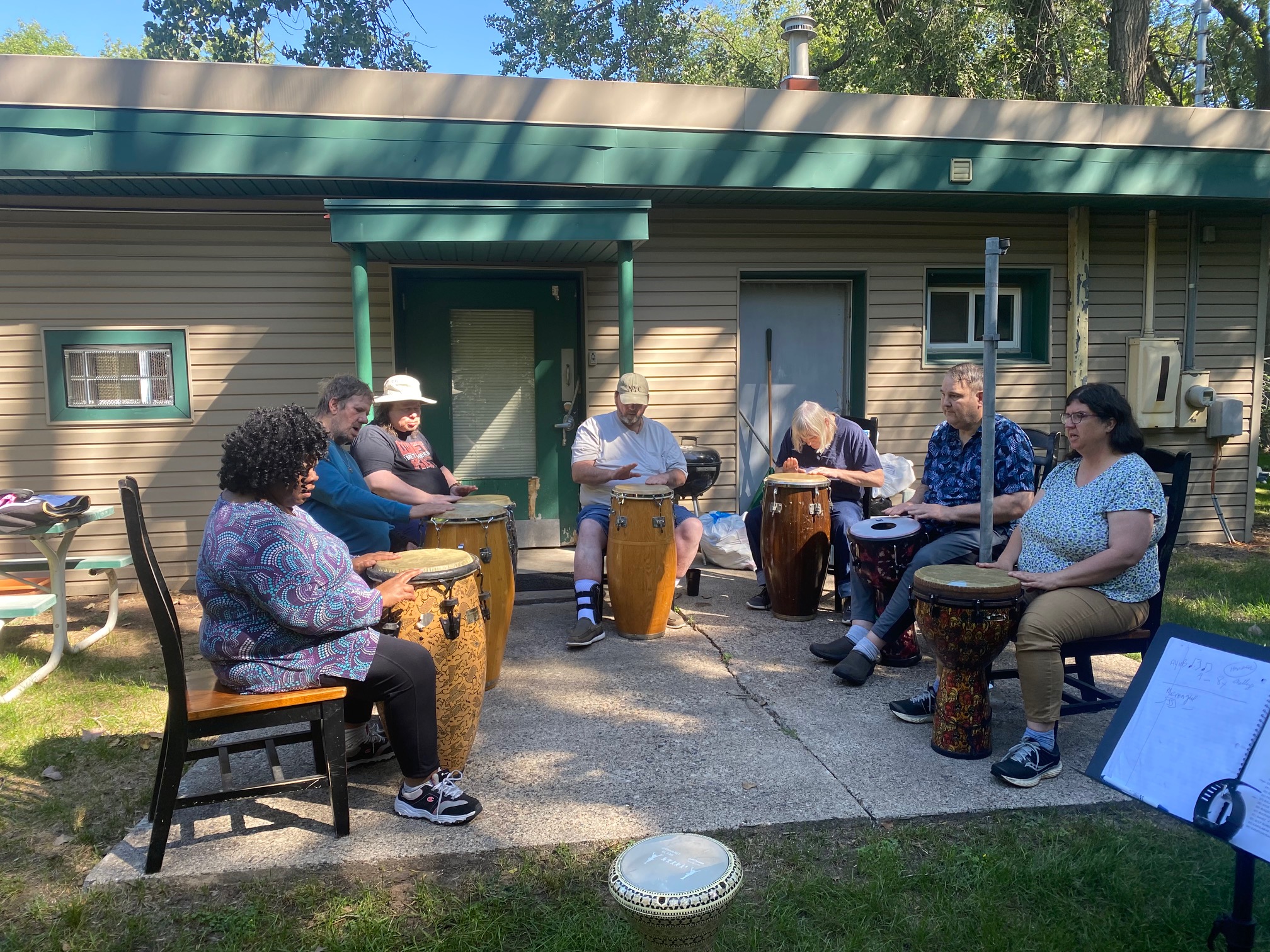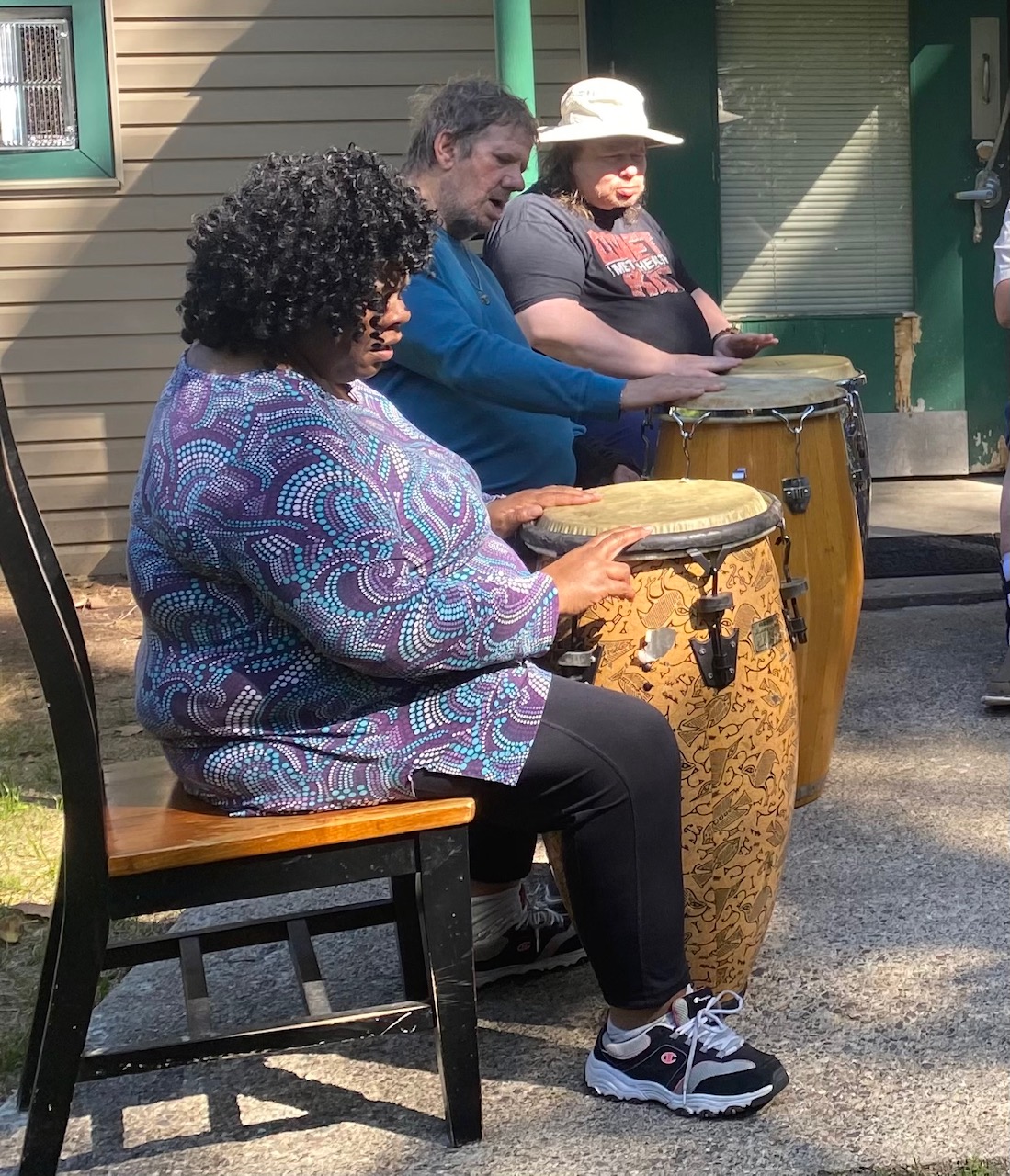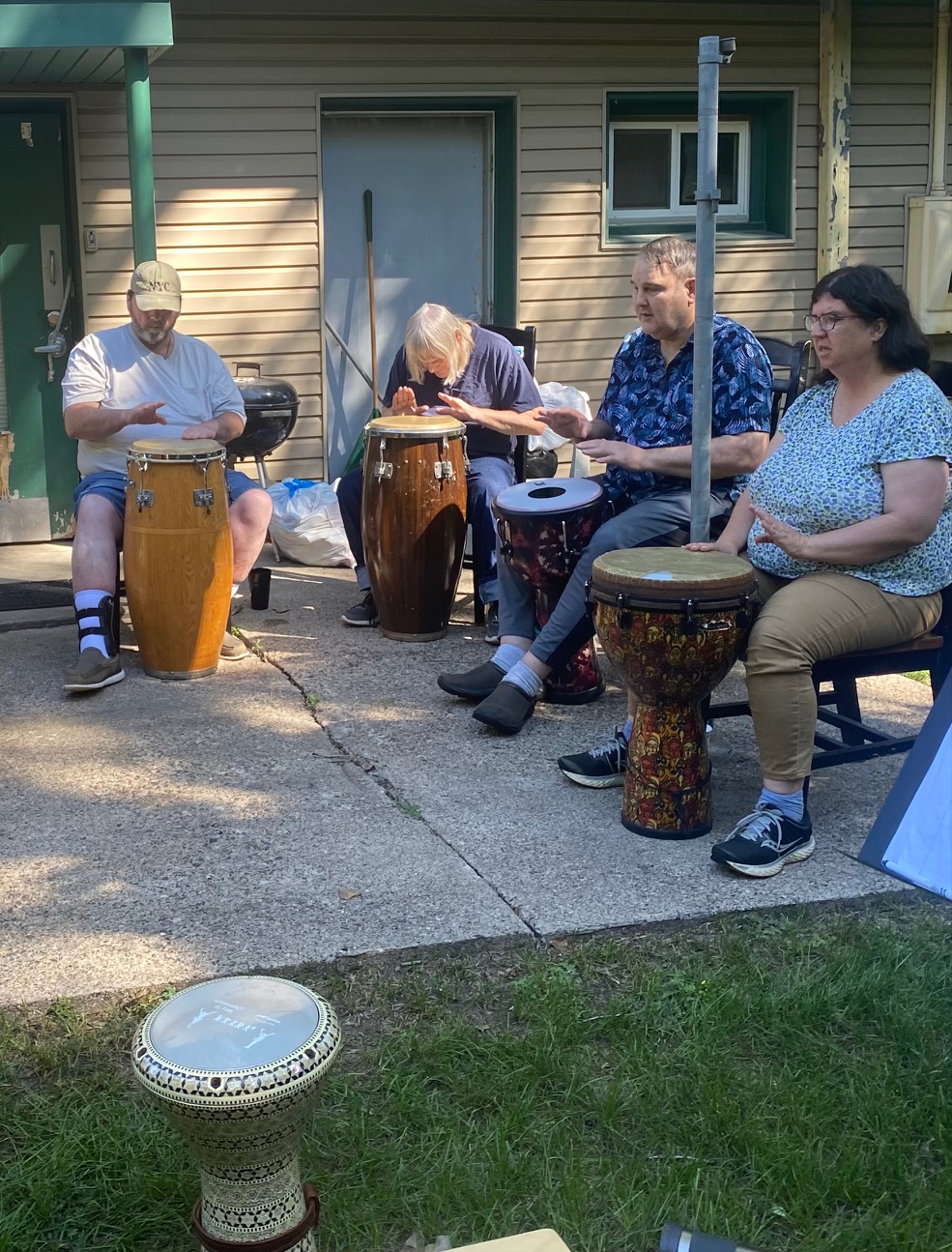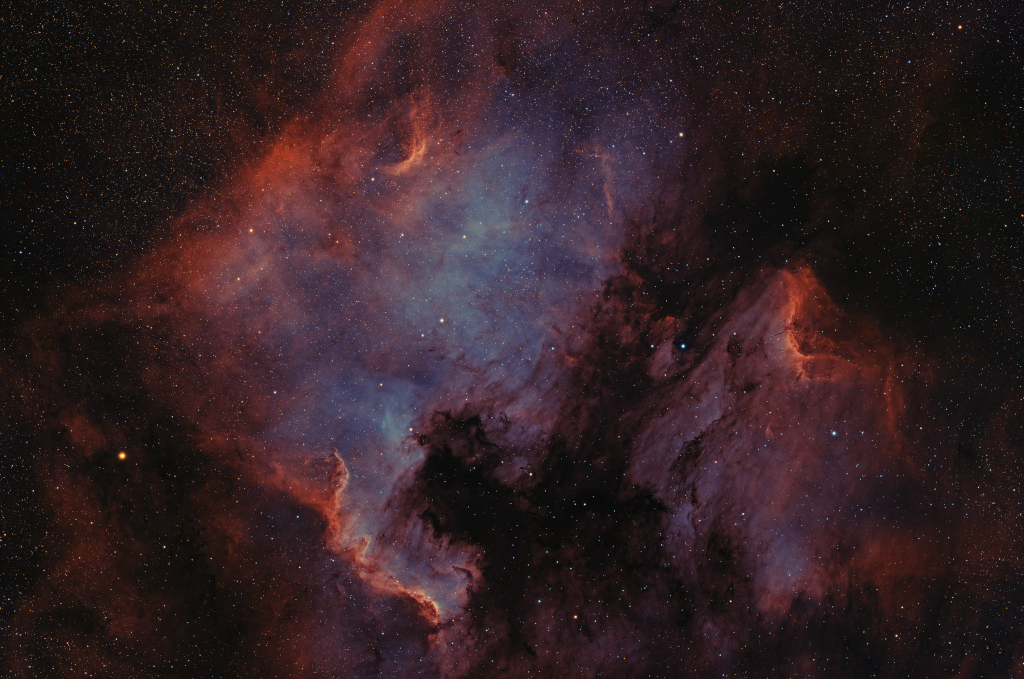Blog
José Monserrate Feliciano García (born September 10, 1945), better known as José Feliciano (Spanish pronunciation: [xoˈse feliˈsjano]), is a Puerto Rican musician, singer and composer. He has had many international hits, including his rendition of the Doors‘ “Light My Fire” and the Christmas single “Feliz Navidad“. His music fuses styles — Latin, jazz, blues, soul and rock—created primarily with his signature acoustic guitar sound.
In the United States, Feliciano became popular in the 1960s, particularly after his 1968 album Feliciano! reached number two on the music charts. Thus far, he has released over fifty albums, worldwide, in both English and Spanish.
José Monserrate Feliciano Garcia was born on September 10, 1945, in Lares, Puerto Rico, the fourth child of 11 sons. He was born blind as a result of congenital glaucoma. He was first exposed to music at the age of 3, playing on a cracker tin can while accompanying his uncle who played the cuatro. When Feliciano was five, his family moved to Spanish Harlem, New York City, where he made his first public appearance at the Teatro Puerto Rico in The Bronx.
more...
William B. Lawsha, better known as Prince Lasha (/ləˈʃeɪ/), (September 10, 1929 – December 12, 2008) was an American jazz alto saxophonist, baritone saxophonist, flautist, clarinetist and English horn player.
Lasha moved to California during the 1950s. In the 1960s, he was active in the burgeoning free jazz movement, of which his Fort Worth cohort Ornette Coleman was a pioneer. Lasha recorded with Eric Dolphy (Iron Man and Conversations, both in 1963) and the Elvin Jones/Jimmy Garrison Sextet featuring McCoy Tyner (Illumination!, also in 1963).
Lasha moved to Europe and in 1966 was based in Kensington, London, The album Insight (1966) by the Prince Lasha Ensemble was recorded in England and featured local musicians, including Bruce Cale, Dave Willis, Jeff Clyne, Rick Laird, Joe Oliver (drums), David Snell (harp), Mike Carr, Stan Tracey, John Mumford (trombone) and Chris Bateson (trumpet).
more...Roy James Brown (September 10, 1920 or 1925 – May 25, 1981) was an American blues singer who had a significant influence on the early development of rock and roll and the direction of R&B. His original song and hit recording “Good Rockin’ Tonight” has been covered by many artists including Wynonie Harris, Elvis Presley, Bruce Springsteen, Paul McCartney, Joe Ely, Ricky Nelson, Jerry Lee Lewis, Pat Boone, James Brown, the Doors, and the rock group Montrose. Brown was one of the first popular R&B singers to perform songs with a gospel-steeped delivery, which was then considered taboo by many churches. In addition, his melismatic, pleading vocal style influenced notable artists such as B.B. King, Bobby Bland, Elvis Presley, Jackie Wilson, James Brown and Little Richard.
Brown was born in Kinder, Louisiana. Some sources report his birth date as September 10, 1925, but the researchers Bob Eagle and Eric LeBlanc gave the date as September 10, 1920, on the basis of information in the 1930 census and Social Security records, and stated that 1925 is incorrect. Media reports state that he was either 55 or 56 at the time of his death.
more...Performing with Inbal Sharett-Singer for 6:00 p.m. Erev Shabbat Service Honoring and Celebrating Cantor Abelson
more...This image from the NASA/ESA Hubble Space Telescope shows the barred spiral galaxy NGC 7496, which lies over 24 million light-years away in the constellation Grus. This constellation, whose name is Latin for crane, is one of four constellations collectively known as the Southern Birds. The others are Pavo, Phoenix and Tucana, which depict a peacock, phoenix, and toucan respectively. The rest of the night sky is also home to a flock of ornithological constellations, including an eagle (Aquilla), swan (Cygnus), crow (Corvus), and dove (Columba).
This image comes from a collection of observations delving into the relationship between young stars and the cold, dense clouds of gas in which they form. In addition to observations with Hubble’s Wide Field Camera 3 and Advanced Camera for Surveys, the astronomers behind this project gathered data using the Atacama Large Millimeter/submillimeter Array (ALMA), one of the largest radio telescopes in the world.
As well as shedding light on the speed and efficiency of star formation in a variety of galactic environments, this project is also creating a treasury of data incorporating both Hubble and ALMA observations. This treasure trove of data from two of the world’s most capable observatories will contribute to wider research into star formation, as well as paving the way for future science with the James Webb Space Telescope.

David Sánchez (born 9 September 1968 in Guaynabo, Puerto Rico) is a Grammy-winning jazz tenor saxophonist from Puerto Rico.
Sanchez took up the conga when he was eight and started playing tenor saxophone at age 12. His earliest influences were Afro-Caribbean and danzabut also European and Latin classical. At 12 Sanchez attended La Escuela Libre de Musica, which emphasized formal musical studies and classical European styles and was much taken with a Miles Davis album, Basic Miles, featuring John Coltrane, as well as Lady in Satin, a 1958 album by Billie Holiday with strings, arranged and conducted by Ray Ellis. Sanchez considered a college career in psychology but auditioned at Berklee and Rutgers University. Sanchez chose Rutgers because he got a better scholarship and was near New York which was Sanchez’ goal. While at Rutgers, Sanchez studied with Kenny Barron, Ted Dunbar, and John Purcell.
more...Otis Ray Redding Jr. (September 9, 1941 – December 10, 1967) was an American singer and songwriter. He is considered one of the greatest singers in the history of American popular music and a seminal artist in soul music and rhythm and blues. Nicknamed the “King of Soul“, Redding’s style of singing gained inspiration from the gospel music that preceded the genre. His singing style influenced many other soul artists of the 1960s.
Redding was born in Dawson, Georgia, and at age two, moved to Macon. Redding quit school at age 15 to support his family, working with Little Richard‘s backing band, the Upsetters, and by performing in talent shows at the historic Douglass Theatre in Macon. In 1958, he joined Johnny Jenkins‘s band, the Pinetoppers, with whom he toured the Southern states as a singer and driver. An unscheduled appearance on a Stax recording session led to a contract and his first hit single, “These Arms of Mine“, in 1962.
Stax released Redding’s debut album, Pain in My Heart, two years later. Initially popular mainly with African-Americans, Redding later reached a wider American pop music audience. Along with his group, he first played small shows in the American South. Redding later performed at the popular Los Angeles night club Whisky a Go Go and toured Europe, performing in London, Paris and other major cities. He also performed at the Monterey Pop Festival in 1967.
Shortly before his death in a plane crash, Redding wrote and recorded his iconic “(Sittin’ On) The Dock of the Bay” with Steve Cropper. The song became the first posthumous number-one record on both the Billboard Hot 100 and R&B charts. The album The Dock of the Bay was the first posthumous album to reach number one on the UK Albums Chart. Redding’s premature death devastated Stax. Already on the verge of bankruptcy, the label soon discovered that the Atco division of Atlantic Records owned the rights to his entire song catalog.
Redding received many posthumous accolades, including two Grammy Awards, the Grammy Lifetime Achievement Award and induction into the Rock and Roll Hall of Fame, the Black Music & Entertainment Walk of Fame. and the Songwriters Hall of Fame. In addition to “(Sittin’ On) The Dock of the Bay”, “Respect” and “Try a Little Tenderness” are among his best-known songs.
By 1967, the band was traveling to performances in Redding’s Beechcraft H18 airplane. On December 9, they appeared on the Upbeat television show produced in Cleveland. They played three concerts in two nights at a club called Leo’s Casino. After a phone call with his wife and children, Redding’s next stop was Madison, Wisconsin; the next day, Sunday, December 10, they were to play at the Factory nightclub, near the University of Wisconsin.
Although the weather was poor, with heavy rain and fog, and despite warnings, the plane took off. Four miles (6.5 km) from their destination at Truax Field in Madison, pilot Richard Fraser radioed for permission to land. Shortly thereafter, the plane crashed into Lake Monona. Bar-Kays member Ben Cauley, the accident’s only survivor, was sleeping shortly before the accident.
more...Elvin Ray Jones (September 9, 1927 – May 18, 2004) was an American jazz drummer of the post-bop era.
Most famously a member of John Coltrane‘s quartet, with whom he recorded from late 1960 to late 1965, Jones appeared on such widely celebrated albums as My Favorite Things, A Love Supreme, Ascension and Live at Birdland. After 1966, Jones led his own trio, and later larger groups under the name The Elvin Jones Jazz Machine. His brothers Hank and Thad were also celebrated jazz musicians with whom he occasionally recorded. Elvin was inducted into the Modern Drummer Hall of Fame in 1995. In his The History of Jazz, jazz historian and critic Ted Goia calls Jones “one of the most influential drummers in the history of jazz.” He was also named Number 23 on Rolling Stone Magazine’s 100 Greatest Drummers of All Time.
Elvin Jones was born in Pontiac, Michigan, to parents Henry and Olivia Jones, who had moved to Michigan from Vicksburg, Mississippi. His elder brothers were pianist Hank Jones and trumpeter Thad Jones, both highly regarded musicians as well. By age two he said drums held a special fascination for him. He would watch the circus parades go past his home as a child, and was particularly excited by the marching band drummers.
Following this early passion, Elvin joined his high school’s black marching band, where he developed his foundation in rudiments. Jones served in the United States Army from 1946 to 1949. With his mustering-out pay (and an additional $35.00 borrowed from his sister), Jones purchased his first drumset.
more...Tarantas and Taranto are two related styles (palos) of Flamenco music, that originated in the Andalusian province of Almería. Each is characterized by a shared modality (F-sharp Phrygian) and harmonic progression (Bm–A7–G–F-sharp), but differ significantly with respect to rhythm and meter. Tarantas is a cante libre (or toque libre, if played as a solo), meaning that it lacks both a regular rhythmic pattern (compás, in flamenco terminology) and a regular rhythmic unit (or beat). It can be sung or played, but not danced. Taranto, conversely, has a regular 2/4-meter, and is danceable. When played on, or accompanied by, the guitar, both palos have a unique and characteristic sound that is created, in part, by dissonances that result from the use of the guitar’s first three open strings (E, B, and G, respectively), in combination with harmonies and melodies based on the F-sharp Phrygian mode.
“Taranta”, as flamenco style, was originated in the region of Almeria. “Taranta” is one of the “cantes minero-levantinos” and is the origin of mining songs. It is composed by a couplet of 4 or 5 eight-syllable verses. One of them is repeated when is sung. The first “taranta” singer was Rojo “el Alpargatero” who sang on the basis of “fandangos”. It is a free interpretation in every verse of the song.
more...Teaching a Rhythm Roots Workshop at Tasks Unlimited (https://tasksunlimited.org) St Louis Park location working with the Mental Health community. Celebrating world drumming and world cultures. Sept 1st thru Oct 13th on Thursdays.




more...
On the left, bright emission outlined by dark, obscuring dust lanes seems to trace a continental shape, lending the popular name North America Nebula to the emission region cataloged as NGC 7000. To the right, just off the North America Nebula’s east coast, is IC 5070, whose avian profile suggests the Pelican Nebula. The two bright nebulae are about 1,500 light-years away, part of the same large and complex star forming region, almost as nearby as the better-known Orion Nebula. At that distance, the 3 degree wide field of view would span 80 light-years. This careful cosmic portrait uses narrowband images combined to highlight the bright ionization fronts and the characteristic glow from atomic hydrogen, and oxygen gas. These nebulae can be seen with binoculars from a dark location. Look northeast of bright star Deneb in Cygnus the Swan, soaring high in the northern summer night sky.

Ronald Charles McKernan (September 8, 1945 – March 8, 1973 San Bruno, CA), known as Pigpen, was an American musician. He was a founding member of the San Francisco band the Grateful Dead and played in the group from 1965 to 1972.
McKernan grew up heavily influenced by African-American music, particularly the blues, and enjoyed listening to his father’s collection of records and taught himself how to play harmonica and piano. He began socializing around the San Francisco Bay Area, becoming friends with Jerry Garcia. After the pair had played in various folk and jug bands, McKernan suggested they form an electric group, which became the Grateful Dead. He was the band’s original frontman as well as playing harmonica and electric organ, but Garcia and bassist Phil Lesh‘s influences on the band became increasingly stronger as they embraced psychedelic rock. McKernan struggled to keep up with the changing music, causing the group to hire keyboardist Tom Constanten, with McKernan’s contributions essentially limited to vocals, harmonica, and percussion from November 1968 to January 1970. He continued to be a frontman in concert for some numbers, including his interpretations of Bobby Bland‘s “Turn On Your Love Light” and the Rascals‘ “Good Lovin’“.
Unlike the other members of the Grateful Dead, McKernan avoided psychedelic drugs, preferring to drink alcohol (namely whiskey and flavored fortified wine). By 1971, his health had been affected by alcoholism and liver damage and doctors advised him to stop touring. Following a hiatus, he resumed touring with the group in December 1971 but was forced to retire from touring altogether in June 1972. McKernan was found dead of a gastrointestinal hemorrhage on March 8, 1973, aged 27, and is buried at Alta Mesa Memorial Park in Palo Alto.
more...David William Kearney (September 8, 1934 – April 20, 2022), known as Guitar Shorty, was an American blues guitarist, singer, and songwriter. He was known for his explosive guitar style and wild stage antics. Credited with influencing both Jimi Hendrix and Buddy Guy, Guitar Shorty recorded and toured from the 1950s until the 2020s. In 2017, Billboard magazine said, “his galvanizing guitar work defines modern, top-of-the-line blues-rock. His vocals remain as forceful as ever. Righteous shuffles…blistering, sinuous guitar solos.”
Shorty was born in either Houston, Texas, or Loughman, Florida. He grew up mainly in Kissimmee, Florida. He was taught by his uncle to play the guitar at an early age, and began leading a band not long after. During his time in Tampa Bay, Florida, at age 16 he received his nickname, Guitar Shorty, when it mysteriously showed up on the marquee of the club he was playing as ‘The Walter Johnson Band featuring Guitar Shorty.’ He steadily began to garner accolades from his peers and, soon after, he joined the Ray Charles Band for a year. He recorded his first single in 1957, “You Don’t Treat Me Right”, for the Cobra label under the direction of Willie Dixon, after Dixon saw him playing with the Walter Johnson Orchestra.
more...James Earl Clay (born September 8, 1935 – January 6, 1995) was an American jazz tenor saxophonist and flutist.
Clay was born in Dallas, Texas, on September 8, 1935. While in school, Clay played alto saxophone, and then played with local bands from around the age of 17.
Clay moved to California in 1955, where he initially played in jam sessions. He appeared on recordings with Lawrence Marable the following year. Clay then played with freer musicians including Don Cherry, Billy Higgins, and Ornette Coleman, before returning to Dallas in 1958. He joined the military in 1959, and recorded two albums as a leader the following year. Back in California, he led a quartet with Roosevelt Wardell, Jimmy Bond, and Frank Butler, but soon returned to Texas. He toured with Lowell Fulson in the early 1960s, and with Ray Charles on and off between 1962 and 1977. A reappearance on a recording led by Cherry in 1988 – Art Deco – led to a short resurgence of interest in Clay’s career. He died in Dallas on January 6, 1995.
more...Wilbur Bernard Ware (September 8, 1923 – September 9, 1979) was an American jazz double bassist. He was a regular bassist for the Riverside record label in the 1950s, and recorded regularly in that decade with Johnny Griffin, Kenny Dorham, Kenny Drew, and Thelonious Monk. He also appeared on records released by J.R. Monterose, Toots Thielemans, Sonny Clark, Tina Brooks, Zoot Sims, and Grant Green, among others.
Ware grew up in Chicago where he taught himself to play drums, banjo, bass while playing at church. In the 1940s, he worked with Stuff Smith, Sonny Stitt, and Roy Eldridge. He recorded with Sun Ra in the early 1950s. Later in the 1950s, settling in New York City, Ware played with Eddie Vinson, Art Blakey, and Buddy DeFranco. His only album recorded as a leader during his lifetime was The Chicago Sound, from 1957 when he worked for Riverside. He made jazz instructional albums for Music Minus One. In 1958, Ware was one of 57 jazz musicians to appear in the photograph A Great Day in Harlem.
Ware was a member of the Thelonious Monk quartet from 1957 to 1958. He also performed and recorded in 1957 with the Sonny Rollins Trio at the Village Vanguard. Largely self taught, Ware had an unorthodox but highly unique and percussive approach to the bass.
Ware’s addiction to narcotics resulted in his return to Chicago in 1963, and then to a period of incarceration. He was inactive musically for about six years. In 1969, Ware played with Clifford Jordan, Elvin Jonesand Sonny Rollins. He died from emphysema in Philadelphia, Pennsylvania, in 1979.
more...More Posts
- Oscar Aleman Day
- World Music with Lemon Bucket Orkestra
- Daily Roots with Tea House with Emperor Rusko
- Echos of Freedom by Stokely Carmichael
- The Cosmos with NGC 2857
- Smokey Robinson Day
- Louis Kid Shots Madison Day
- World Music with Anna Mhoireach
- Daily Roots with Dandy Livingstone
- Echos of Freedom by Chief Red Eagle
- The Cosmos with the Aurora over Iceland
- Roy Burrowes Day
- Frank Butler Day
- World Music with Anouar Brahem
- Daily Roots with Prince Far I
- Echos of Freedom by Alice Walker
- The Cosmos with the Milky Way between Sagittarius and Scorpius
- Fred Frith Day
- Noble “Thin Man” Watts Day
- World Music with Sir Victor Uwaifo